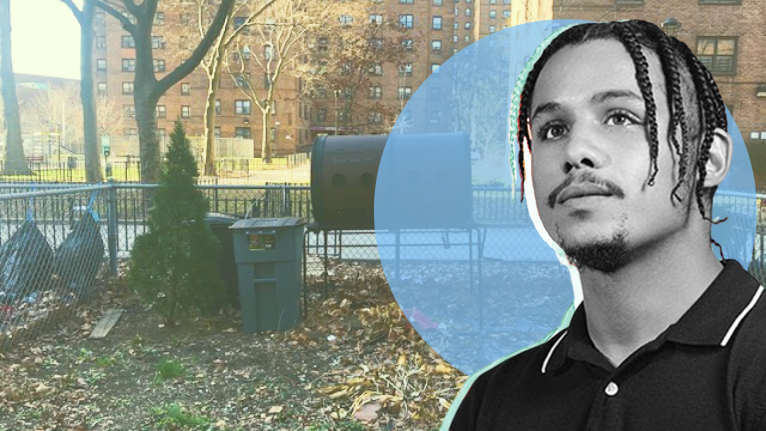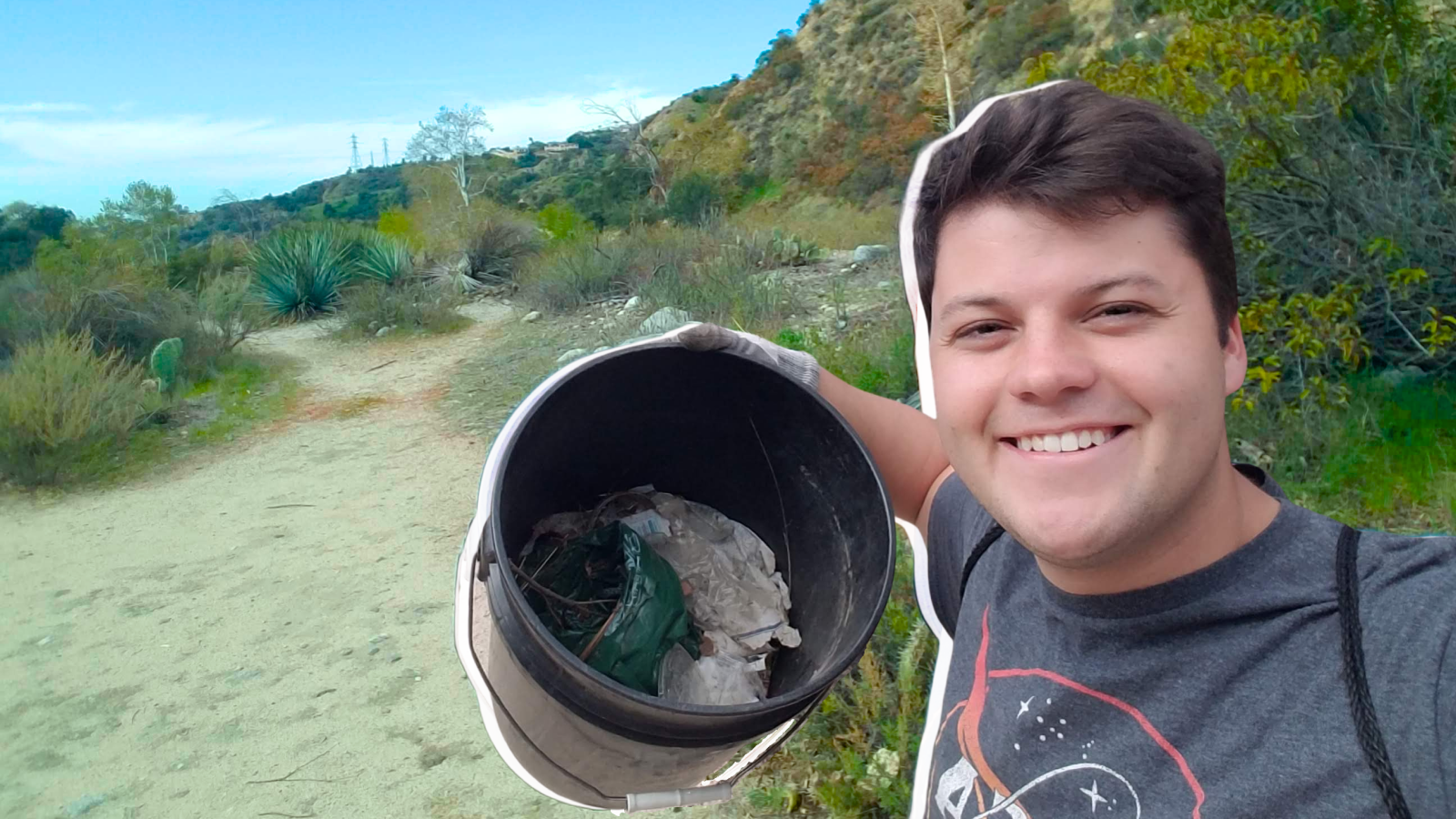For 589 days, climate activist Edgar McGregor spent every day cleaning up Eaton Canyon in Southern California. On March 5, McGregor took to Twitter to declare the 190-acre park entirely free of trash. His post went viral and drew the attention of climate leaders such as Greta Thunberg and Leah Stokes. And that’s not all he’s been doing –– McGregor’s climate activism extends beyond his work cleaning up the popular hiking spot in the San Gabriel Mountains.
McGregor has always loved nature. Growing up in Los Angeles County, he was surrounded by beaches and mountains. However, his favorite place is Eaton Canyon, which he calls “one of L.A.’s backyards.” It has been a part of his life for as long as he can remember. “In elementary school, we used to come out here for field trips all the time,” the 20-year-old says. “It’s really amazing out there. It’s unlike a lot of other area hiking trails. When I go to the tops of the hills, I can see all of Los Angeles.”
Its prime location — right off of one of the major freeways in L.A. — as well as its relatively diverse terrain make Eaton Canyon one of the most popular hikes in the area. Its trails attract over 600,000 visitors a year, according to McGregor. With all that foot traffic, litter is a big problem. McGregor wanted to help. He started by going to the park occasionally to pick up the discard, but quickly realized that getting the place totally trash-free would require more than a few casual clean-ups.
From that day forward, McGregor visited the canyon daily. Rain or shine, he would be out there for at least an hour. “I really get a kick out of cleaning up in pretty extreme weather,” he says — especially snow, which he knows might not be a part of this landscape for much longer. (McGregor plans on heading to San Jose State University in the fall, to study meteorology and climatology.)
While it is often easy to get overwhelmed by the scale of what needs fixing, McGregor’s work shows us how something as simple as picking up litter can have a huge impact. Fix caught up with McGregor (whose Zoom background is none other than Eaton Canyon, naturally) to chat about his work post-park cleanup, his use of social media for advancing climate activism, and advice for getting involved in the larger movement. His comments have been edited for length and clarity.
Q. You’re very active on Twitter. How do you see social media playing a role in your climate activism?
A. I have a lot of followers from other parts of the world. When people send me photographs of them cleaning up a river in Sydney, I think, “That is so cool. I get to clean up my park here in Los Angeles, but I’m inspiring people on the other side of the world.”
My Twitter is an extension of my cleanups, but I talk about a lot of other things. I talk about climate change and what we need to do. I talk about native trees planted in this park that I care for.
Q. After you declared the park clean, you kind of called out the Los Angeles County Parks and Recreation Department on social media. How’d that go?
A. Well honestly, I don’t blame them. The problem is that Los Angeles County Parks and Recreation, as well as the Angeles National Forest, don’t have enough funding. The Los Angeles Police Department is way overfunded. Meanwhile, we have a serious homeless problem in this city. We have our parks trashed. Our freeways are trashed. Our beaches are not in great shape. The public restrooms are not in good shape. What I would like the parks and recreation department to do is stand up to the county and the state and say, “We need more funding and we need it now.”
Los Angeles is going to host the 2028 Summer Olympics. I don’t want world athletes to come to our hiking trails and see the trash situation. We need to reinvest in our parks, reinvest in our beaches, reinvest in our natural areas.
Q. What other climate actions or activism are you involved in?
A. Before the pandemic, I was doing the weekly climate strikes with Greta Thunberg and thousands of other youth worldwide. The marches that we had in downtown Los Angeles were always a lot of fun — it’s so inspiring to have thousands of young people out there fighting for this planet.
I also collect recycling in my park. I find bottles, aluminum cans, and whatnot, turn them in, and donate the money to charity. Sometimes I donate it to plant native trees in my park. Other times I’ve donated to politicians who promised to act on the climate crisis.
Q. How would you advise other young people to get involved in the climate movement?
A. I’m going to say this generally — not just to people who want to get involved in climate activism, but to everyone. When you start, start small. Start with one thing. The one thing I started doing with my climate activism was occasionally talking about it online. I would mostly be tweeting about weather, but sometimes I would tweet about climate change, and it slowly built. The next thing I started doing was going out and picking up trash once or twice a year. As I kept going, I realized there was more I could do.
One good way to start your climate activism: The next time you see rainfall in the forecast, go clean the trash out of the gutter. If there’s trash in the street gutters, when that rainfall comes, it’s going to dump the trash into your local parks, waterways, rivers, or worse, the ocean.
The hardest part about becoming a climate activist is taking the first step. I don’t care if you want to take shorter showers, if you want to not drive a car, if you want to eat less beef, if you want to do all those things. Just pick something and be vocal about it. Tell your friends, neighbors, coworkers, and family what you’re doing, why you’re doing it, and from there the rest is history. It doesn’t matter how little you are involved, just do something.



